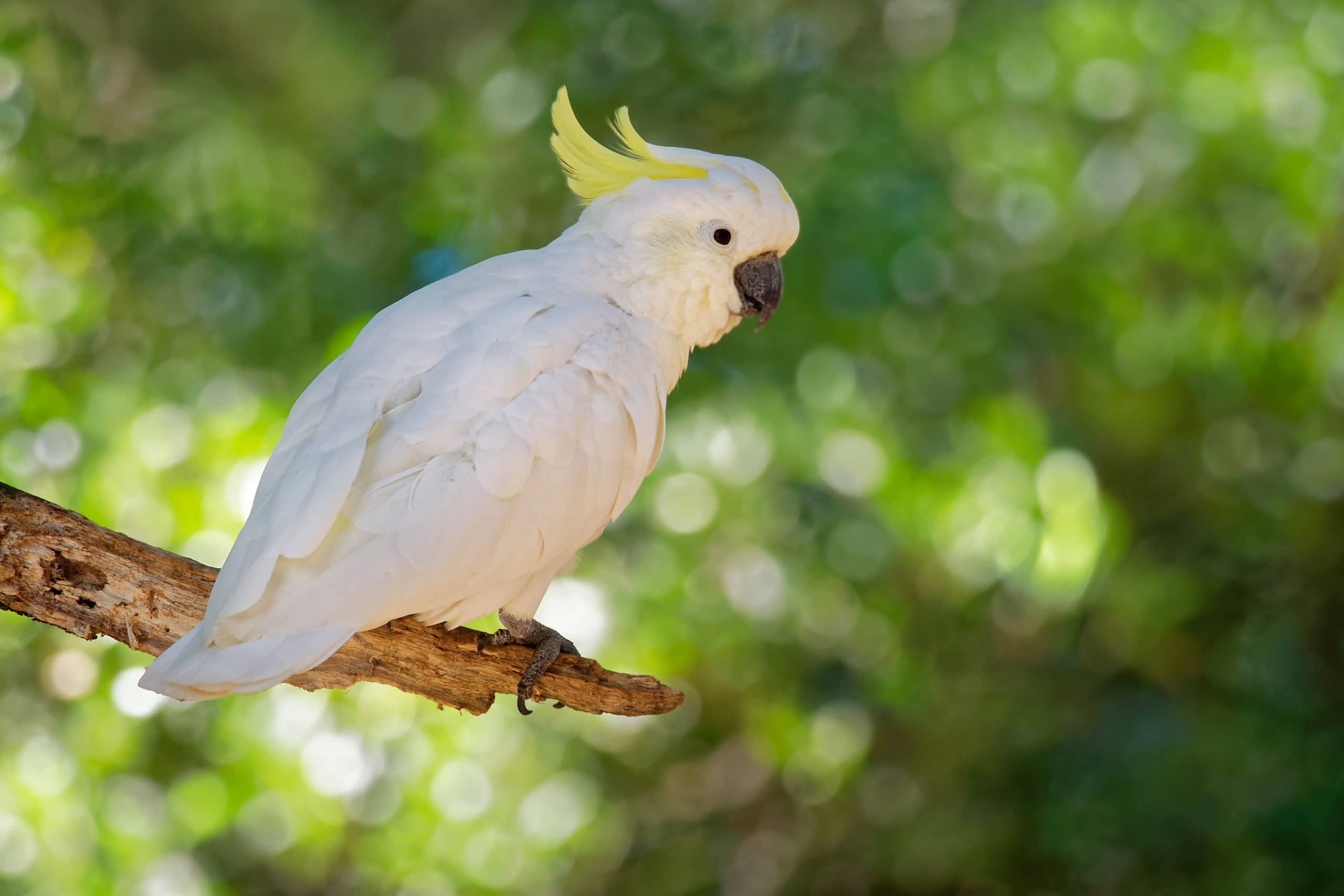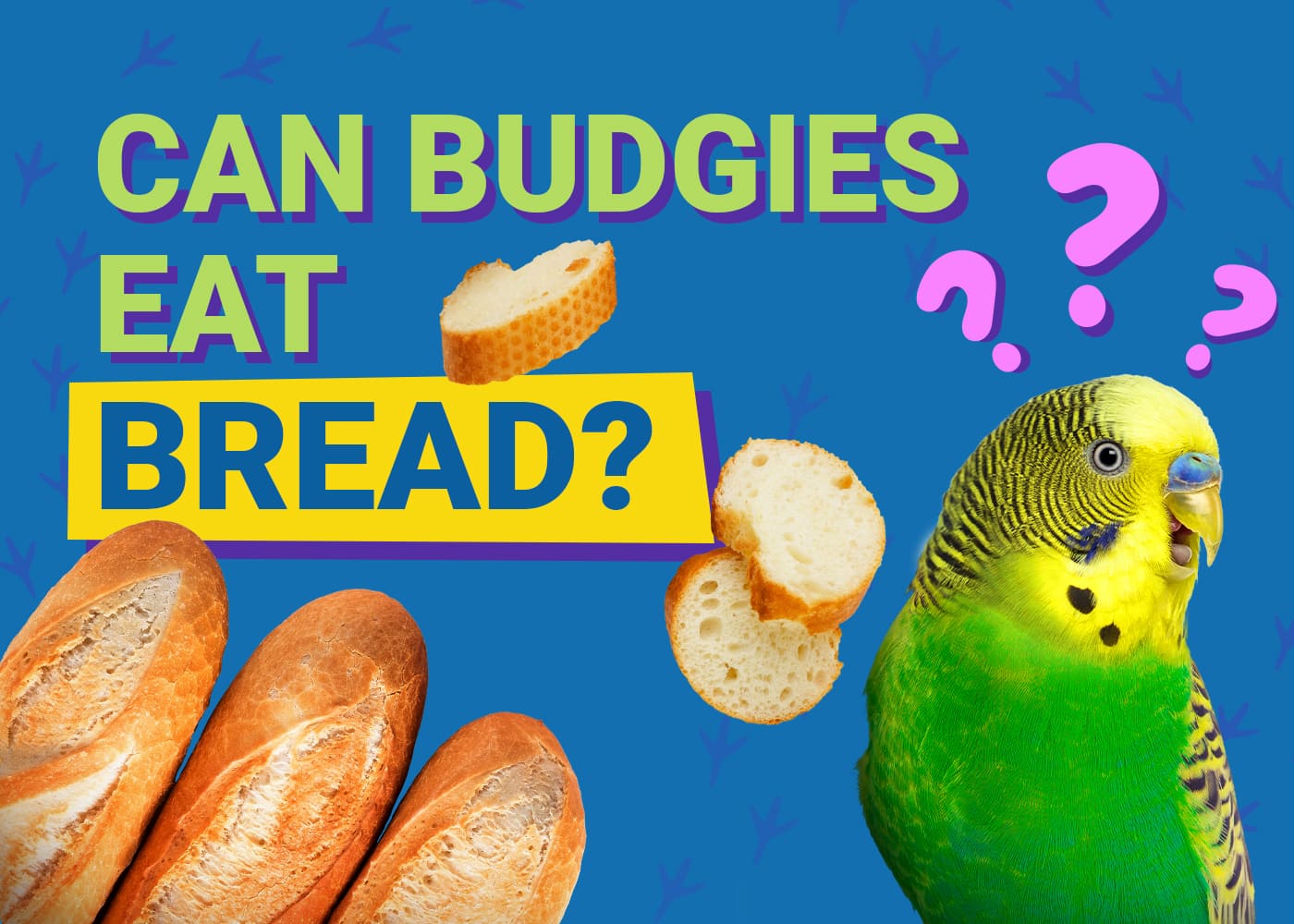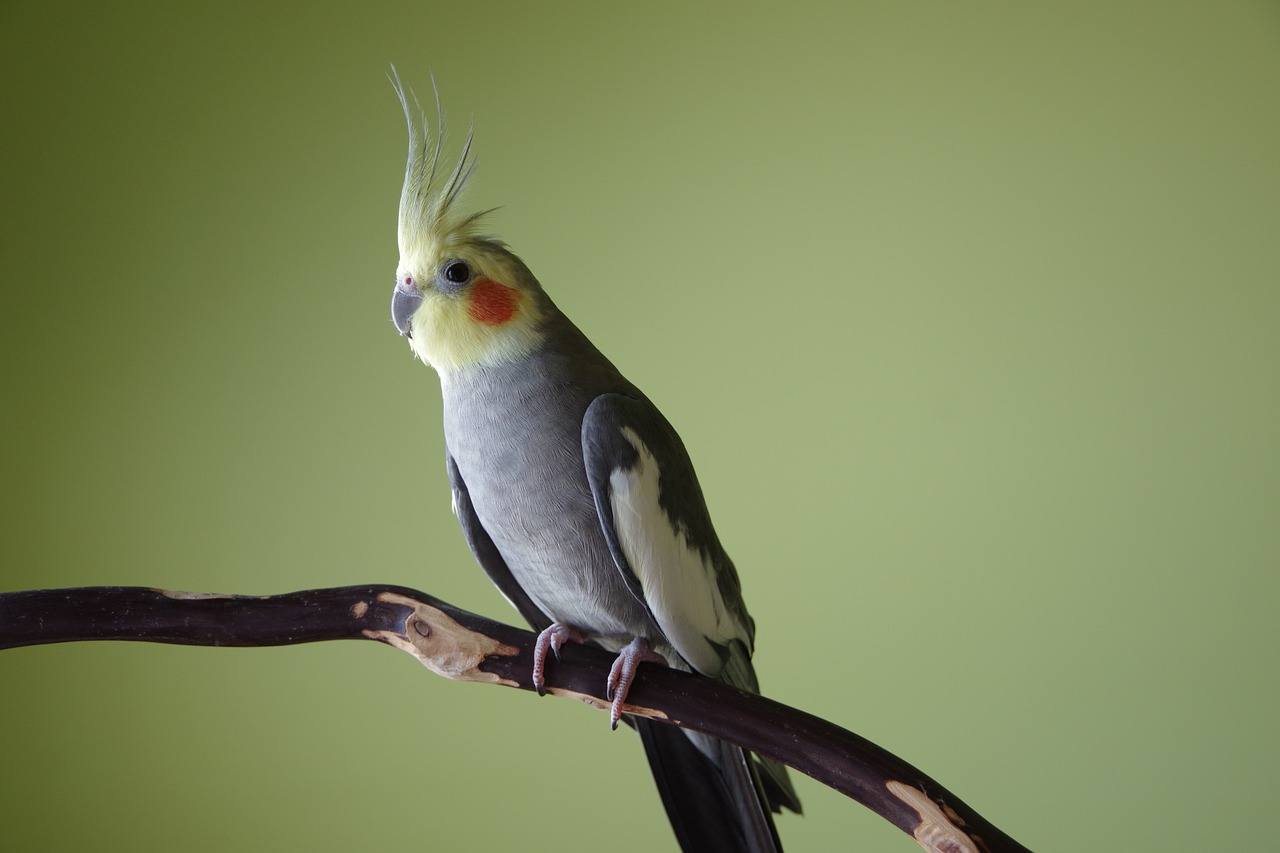
While humans generally don’t make a point of inspecting their own excrement, it’s not a bad habit to get into if you’re a bird owner. Your pet bird’s droppings are a fantastic indicator of its well-being, so the sooner you acquaint yourself with your cockatiel’s poop, the better.
Once you educate yourself on how to “read” your pet’s droppings, you begin to be a better parent as you can quickly identify any potential issues as they arise.
Whether you’re a current or soon-to-be cockatiel owner, there’s no time like the present to learn everything there is to know about bird droppings. Keep reading to learn about the makeup of cockatiel poop, why you need to check your bird’s feces every day, and how to determine if there is an illness afoot.
Importance of Checking Your Cockatiel’s Poop
It sounds gross, we know, but keeping tabs on your cockatiel’s poop can tell you a lot about its health. Birds of all species often experience a change in their dropping when they fall ill. Changes in color, volume, wetness, or frequency can all be indicators of sickness.
It’s a good idea to get a baseline idea of what your bird’s poops look like when it’s healthy. Observing poops daily will give you an idea of what’s within a normal range of variation and will allow you to assess if the droppings become abnormal.
Before you can begin inspecting your cockatiel’s poop, you should know the three components of normal droppings.
In addition to knowing what to expect with the three components of your cockatiel’s droppings, you should also keep an eye on the color, consistency, and smell.
In a healthy poop, the colored (green or brown) part of the droppings should be close to equal to the white portion. There should be just enough liquid for the droppings to “glisten,” which may look like a halo of wetness around the droppings on the paper in your cage. The poop should be stiff but still soft enough to keep its shape and shouldn’t have much of a smell (if any at all).

Cockatiel Poop Chart
| White urates, clear urine, well-formed brown or green poop | Healthy poop |
| Watery, unformed feces with a pea soup-like appearance | Diarrhea |
| Black or fresh red blood | Digestive tract bleeding Intestinal infection Tumors Egg binding |
| Thick, black, tar-like texture | Melena (digested blood in the stool) |
| Mustard yellow feces | Liver disease |
| Bright green or yellow feces | Your bird may not be eating Chlamydiosis |
| Slimy droppings | Yeast overgrowth |
| Foamy or bubbly droppings | Bacteria infection (e.g., Clostridium) |
| Urine and urates but no feces for several hours | Your bird may not be eating |
| Red urates | Heavy metal toxicity Internal bleeding Kidney issues |
| Yellow urates | Hepatitis |
| Brown urates | Lead poisoning |
| Dark or sticky feces that contains blood | Roundworms |
| Droppings often have a popcorn-like appearance. | Avian giardiasis, pancreatic disease |
| Putrid-smelling or blood-tinged feces | Avian papillomatosis |
| Excessive urine | Kidney disease |
| Straining, lack of dropping, blood in droppings | Prolapsed cloaca Blockage |
Frequently Asked Questions
If my cockatiel has mustard yellow or popcorn-like feces, does it definitely have liver disease, pancreatic disease, or avian giardiasis?
Absolutely not. Just because your cockatiel has one poop that’s mustard yellow, it doesn’t mean that it definitely has liver disease. It could be a one-off situation. It is always a good idea to keep an open line of communication with your avian vet. If there are any significant changes in droppings, you should call your vet for advice.
Are there signs of illness I should be on the lookout for while monitoring my bird’s poop?
If you notice a change in your cockatiel’s droppings, you should look for other telltale symptoms of illness. These can include:
Cockatiels are generally healthy birds, but when something goes wrong, you need a resource you can trust. We recommend The Ultimate Guide to Cockatiels, an excellent illustrated guide available on Amazon.
This detailed book can help you care for your cockatiel through injuries and illnesses, and it also offers helpful tips on keeping your bird happy and healthy. You’ll also find information on everything from color mutations to safe housing, feeding, and breeding.
If you notice such changes in your bird, you should contain your avian veterinary team immediately. If they recommend you bring your pet in for a check-up, bring some of your cage lining papers so they can examine the droppings.
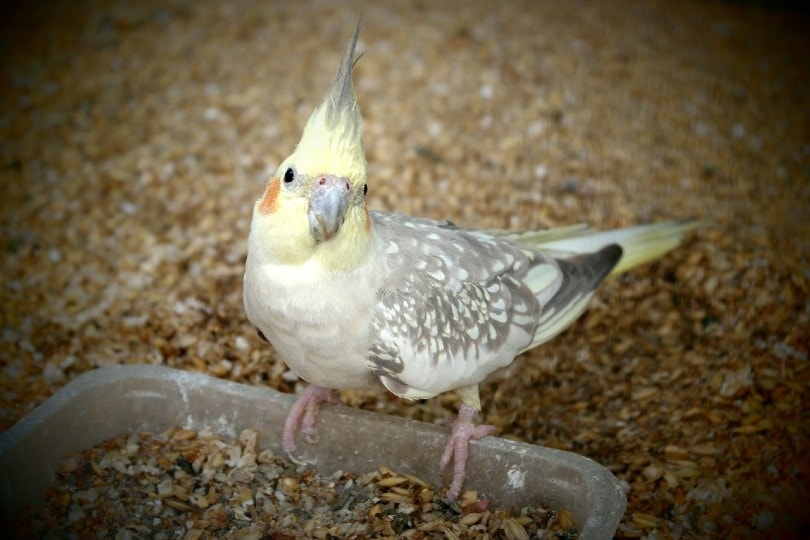
What causes abnormal cockatiel droppings?
Diet can play a significant role in the appearance of your bird’s droppings. For example, if you offer it blueberries, you may notice its droppings have a blue tinge. Excessive fresh fruit intake, especially watery fruit like watermelon, can result in much more urine than usual.
Colored pellets can result in colored droppings, while uncolored pellets can cause brown droppings.
Your bird’s urine output will vary depending on its water intake.
It’s also good to know that urine and urates can pass at different times from feces, so not all liquid droppings are diarrhea.
Of course, there are also more sinister causes for abnormal droppings. We reviewed some of them in our chart above. Other potential reasons include parasitic infection, intestinal diseases, liver disease, and bacterial infections.
What will my vet do to determine the cause of my bird’s abnormal droppings?
Your vet will likely suggest a wide range of tests and a complete physical examination to determine the cause of your pet’s abnormal droppings.
A complete blood count can see if there’s an infection, while a blood chemistry profile can determine how your bird’s liver and kidneys are functioning. X-rays may be necessary to determine if metal toxicity is the cause of the abnormal droppings.
Your vet may need samples of your cockatiel’s droppings to view under a microscope to see if bacteria, parasites or abnormal cells are present.
Depending on your vet’s initial findings, more specialized tests may be required to arrive at the final diagnosis.
How often should my cockatiel poop?
A healthy cockatiel will poop between 18 and 26 times a day or around every 20 minutes or so. Young and juvenile cockatiels may produce more droppings than this.
You may notice a lot of droppings in a concentrated area when you wake your bird up in the morning because it defecates during the night.
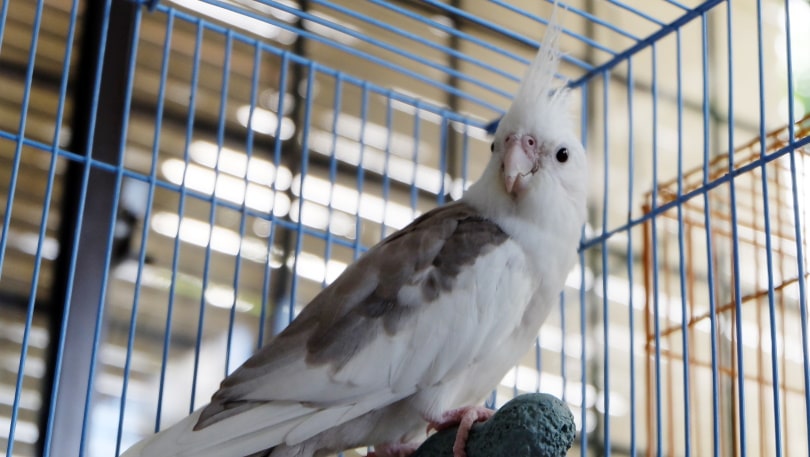
What Should I Do to Help My Cockatiel?
Healthy cockatiel poops start with ensuring your bird is fed a diet that’s appropriate and nutritious. If you ever have any questions or concerns about your cockatiel’s diet, a visit to an avian vet is in order. Your vet can provide guidance and suggestions on how to best support your pet and provide them with the diet they need to thrive.
Generally speaking, your cockatiel needs the perfect balance of fresh fruits, vegetables, and pellets. Seeds and treats can be offered occasionally but should make up less than 10% of their daily diet.
Another way to keep your cockatiel in good shape is to ensure their environment is clean and healthy. Change the paper at the bottom of the cage every day so you can keep an eye on its droppings. Clean out its food and water bowls daily to prevent bacteria growth. Do not let other animals come into close contact with your cockatiel, especially other birds unless you know they’re healthy. Diseases can be spread easily from bird to bird.
Perhaps the most important thing you can do to help your cockatiel is to be aware of subtle changes in its behavior. If these changes are accompanied by a change in droppings (frequency, scent, size, color, etc.), it’s worth calling your avian vet.
If your vet determines your bird has a condition such as prolapsed cloaca, avian giardiasis, parasites, or chlamydiosis, it is important that you follow through with the treatment plan. These conditions can be severe and will require veterinary intervention. We do not recommend trying to treat them with home remedies. Please note that chlamydiosis is a zoonotic disease that you can get from your bird. In humans, the infection is known as Psittacosis. Care and personal protection should be used when handling sick birds.
If you're trying to find an enzyme cleaner that does it all, we highly recommend our favorite cleaner, the Hepper Advanced Bio-Enzyme Pet Stain & Odor Eliminator Spray.
It permanently removes the very worst stains and smells you can imagine and makes clean up a breeze. There's even a 100% satisfaction guarantee! Click here to order a bottle today.
At Pet Keen, we’ve admired Hepper for many years, and decided to take a controlling ownership interest so that we could benefit from the outstanding products of this cool cat company!
Final Thoughts
We hope that you have learned a little by reading our article today. Committing to learning about your bird’s droppings means you’ll be able to recognize symptoms of potential illnesses faster so you can get your pet the help it needs to get healthy again.
It’s important to know that just because your cockatiel has abnormal droppings doesn’t automatically mean it is ill. It can simply be an indicator of illness. You should work closely alongside your avian vet to determine the best diagnostic procedures to determine what is causing the abnormal poops. The sooner you can get your cockatiel to the vet, the better.
Featured Image Credit: jlkramer, Pixabay




